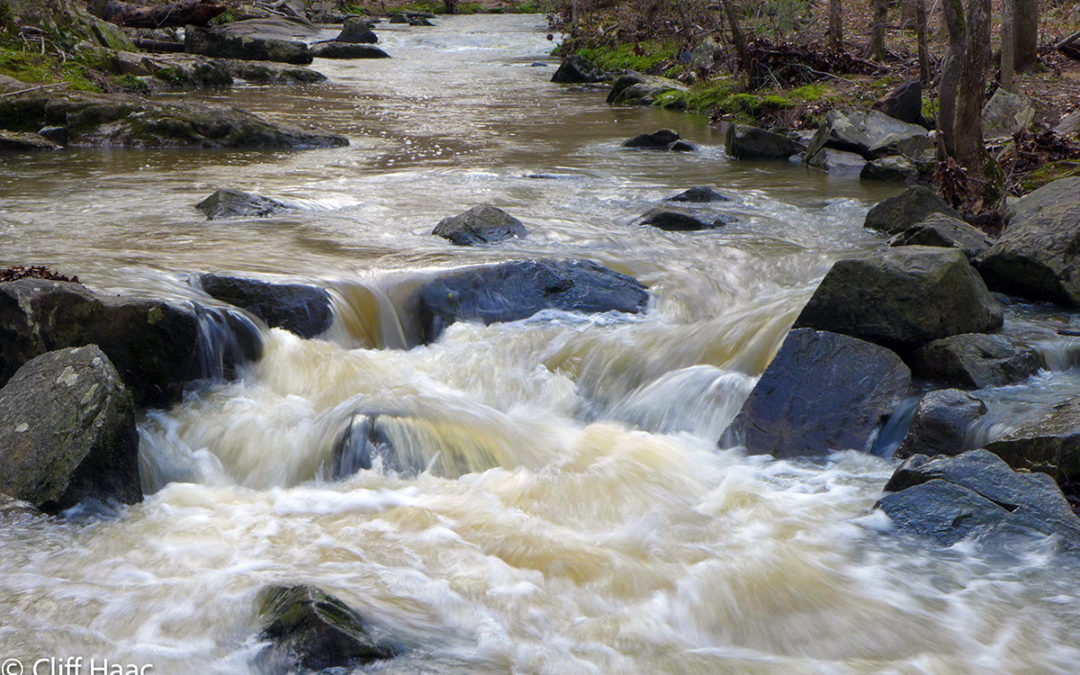Stormwater management in the Bolin Creek watershed will continue to be an issue now and in the future as rain events increase in duration and intensity. An increasingly urbanized town has led to more impervious surfaces causing more rapid run-off and dramatic changes in creek levels typical of many urban stressed streams. Addressing this issue through best practices, such as revegetating buffers along Bolin Creek is the natural way to allow water to be absorbed into the ground.
The upper Bolin Creek watershed was designated an environmentally important, fragile area. See details here. EPA has designated Bolin Creek an impaired stream on the 404 d list. The solution is more vegetation not pavement.
The Town of Carrboro is on record, both through its policy assertions and its actions, in support of restoring the health of Bolin Creek.Carrboro currently is partnering with Friends of Bolin Creek on a 319 grant that is meant to address stormwater issues in nearby Bolin Forest Phase 2 and Forest Court neighborhoods.
The Town has received several earlier federal 319 grants for such restoration as well and has involved Friends of Bolin Creek as a partner in terms of financial support, volunteer support, and scientific credibility. Earlier efforts from 2009 and 2009 can be found in the Dry Gulch Final Report, the McDougle Final Report, and the Pacifica Final Report. Here is one example of a study commissioned by Carrboro and Chapel Hill that resulted in watershed wide recommendations that will improve the health of Boln Creek
2012 Bolin Creek Situation Assessment (WECO 2012): This study was initiated by NC DENR and the Towns of Carrboro and Chapel Hill. Professional facilitators interviewed up to a 100 participants. The Executive Summary is over 40 pages, most of it transcripts of interviews with participants. The BCWRT subcontracted part of a current EPA grant to Watershed Education for Communities and Officials (WECO), a NC Cooperative Extension program, to conduct a situation assessment in the Bolin Creek watershed. The purpose was to better understand the interests of watershed stakeholders and organizations, to identify opportunities to engage stakeholders in Bolin Creek restoration while meeting multiple interests, and to determine how stakeholders would like to participate in restoration efforts.
Key recommendations of WECO Assessment:
- Create a multi organizational collaborative watershed initiative
- Examine how to more holistically plan and manage water resources
- Increase community outreach and engagement on the Carolina North Forest Stewardship Plan
- Investigate how to raise fund for water quality protection through a stormwater utility or other mean
- Convene a facilitated search for bike per routes while protecting Bolin Creek’s riparian corridor

